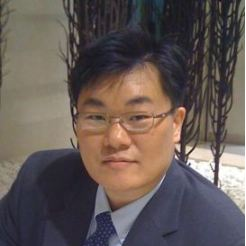Complex Biomaterials Systems and Their Applications (Second Volume)
A special issue of Materials (ISSN 1996-1944). This special issue belongs to the section "Biomaterials".
Deadline for manuscript submissions: closed (20 December 2022) | Viewed by 3195
Special Issue Editor
Interests: drug delivery; scaffolds; organoid/spheroid systems; natural materials; natural medicine
Special Issues, Collections and Topics in MDPI journals
Special Issue Information
Dear Colleagues,
Complex biomaterials systems and their applications is a field that deals with the synthesis, fabrication, integration, and application of biomaterials to practical biological, pharmaceutical, and medical areas. Complex biomaterial-based systems are currently gaining increasing focus as the complexity of the needs in practical fields grow.
It is true that simple systems based on a single structure and/or single composition have been studied extensively and have shown exceptional achievements in recent decades. It is also true that a simple and easy-to-use system is more attractive in practical fields from an applications perspective.
However, as demand from the field requiring sophisticated techniques grows daily, the need for complex systems, including new materials systems, composite materials systems, 3D materials systems, multifunctional systems, materials systems that accompany complicated or new fabrication techniques, etc., is also growing. Such systems can range from nano to macro dimensions, not excluding nano–macro composite systems.
For these reasons, it is my great pleasure to invite you to submit a manuscript to this Special Issue. Full research articles, short communications, and reviews are welcome that are related (but not limited) to the topics that have been described above, including in vivo and in vitro studies, the characterization of properties, and the functionalization of such systems.
Prof. Dr. Donghyun Lee
Guest Editor
Manuscript Submission Information
Manuscripts should be submitted online at www.mdpi.com by registering and logging in to this website. Once you are registered, click here to go to the submission form. Manuscripts can be submitted until the deadline. All submissions that pass pre-check are peer-reviewed. Accepted papers will be published continuously in the journal (as soon as accepted) and will be listed together on the special issue website. Research articles, review articles as well as short communications are invited. For planned papers, a title and short abstract (about 100 words) can be sent to the Editorial Office for announcement on this website.
Submitted manuscripts should not have been published previously, nor be under consideration for publication elsewhere (except conference proceedings papers). All manuscripts are thoroughly refereed through a single-blind peer-review process. A guide for authors and other relevant information for submission of manuscripts is available on the Instructions for Authors page. Materials is an international peer-reviewed open access semimonthly journal published by MDPI.
Please visit the Instructions for Authors page before submitting a manuscript. The Article Processing Charge (APC) for publication in this open access journal is 2600 CHF (Swiss Francs). Submitted papers should be well formatted and use good English. Authors may use MDPI's English editing service prior to publication or during author revisions.
Keywords
- drug delivery
- composites biomaterials
- scaffolds
- surface coatings
- in vivo and in vitro tests
- manufacturing process
- drug screening
- tissue engineering
- natural materials
- bio-nano materials systems
- natural medicines
Benefits of Publishing in a Special Issue
- Ease of navigation: Grouping papers by topic helps scholars navigate broad scope journals more efficiently.
- Greater discoverability: Special Issues support the reach and impact of scientific research. Articles in Special Issues are more discoverable and cited more frequently.
- Expansion of research network: Special Issues facilitate connections among authors, fostering scientific collaborations.
- External promotion: Articles in Special Issues are often promoted through the journal's social media, increasing their visibility.
- Reprint: MDPI Books provides the opportunity to republish successful Special Issues in book format, both online and in print.
Further information on MDPI's Special Issue policies can be found here.






